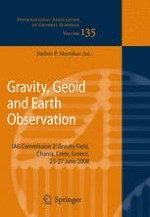2010 | OriginalPaper | Buchkapitel
50. Comparison of Various Topographic-Isostatic Effects in Terms of Smoothing Gradiometric Observations
verfasst von : J. Janák, F. Wild-Pfeiffer
Erschienen in: Gravity, Geoid and Earth Observation
Verlag: Springer Berlin Heidelberg
Aktivieren Sie unsere intelligente Suche, um passende Fachinhalte oder Patente zu finden.
Wählen Sie Textabschnitte aus um mit Künstlicher Intelligenz passenden Patente zu finden. powered by
Markieren Sie Textabschnitte, um KI-gestützt weitere passende Inhalte zu finden. powered by
